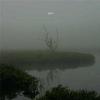- Administrator
- Albums and Singles
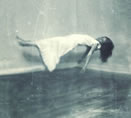 I doubt anyone would disagree that following up last year's stellar In the Maybe World would be a difficult feat, so Young God and Lisa Germano decided to reintroduce this scarcely available 2003 release (ironically frequently heralded as her best release to date) to a larger audience, adding a bonus disc of home demos and live recordings.
I doubt anyone would disagree that following up last year's stellar In the Maybe World would be a difficult feat, so Young God and Lisa Germano decided to reintroduce this scarcely available 2003 release (ironically frequently heralded as her best release to date) to a larger audience, adding a bonus disc of home demos and live recordings.
Young God
For 20 years, Germano has gone from backup musician to front and center stage, courted to dumped by major labels, critically acclaimed singer/songwriter to "retired" and working as a retail clerk yet staying connected and collaborating with some large names (Neil Finn of Split Enz/Crowded House, Johnny Marr, and Wendy of Wendy and Lisa/Prince & the Revolution, for example, all appear on this disc). Over the time her lyrics have, if anything, become far more candid and less opaque while her arrangements have become more intoxicating but through their own delicacy: piano, strings, guitars, marimba, xylophone, and various other instruments are always complimentary, never competing for loudness' sake.
Lullaby for Liquid Pig on its own is a masterpiece, her return after a five year absence following her final 4AD release, Slide. Songs vary from the haunted house proto-pop of "Candy" or the more hit-friendly "It's Party Time" to the sparsely arranged, tinkling piano and hushed strings of "Pearls" to the dark and creeping "Liquid Pig," driven by pulsing drumming and bass guitar, accented by unhuman noises and sound effects. Through her lyrics she channels ranges of themes and emotions from the personal to the abstract, taking the roles of a caring friend, a hopeless romantic, a little girl, and a drunk over the course of the disc. There's no points that feel weak or flawed nor are there ever any moments that are the slightest bit predictable or cliché.
The bonus CD is an extra present for those who are finally getting the disc but it's also more than worth the price of admission for hardcore fans. Extra CD for Pig is approximately 20 minutes longer than Lullaby for Liquid Pig and contains 20 songs in 11 tracks. The song order is unique: it goes back and forth from a home recording to a string of live songs contained within one track. Of the home recordings, Germano gives us stripped-down versions of the otherwise maximal "Candy," "Dream Glasses Off," and "Liquid Pig;" plus a drum machine-enhanced "Making Promises," an old version of "It's Party Time" and something the fans have passed around for years; "It's a Rainbow," recorded originally in 1997 with OPB; and a new unreleased song "My Imaginary Friend." The live recordings took place in both Lisbon and Los Angeles and are all solo performances with Lisa on piano, organ, or guitarselections include material from In the Maybe World, Slide, and even Moon Palace.
This Young God reissue is a fantastic breather until the next record and with the success of last year's monumental release, I'm sure 4AD are shitting themselves that they ever let her go and will undoubtedly make their catalog more available (if they haven't already). Then again it's a perfect time to collect the stuff for those who are only new to her sound.
samples:
Read More
- Administrator
- Albums and Singles
 This 3-CD compilation of singles, non-album tracks, and unreleased material by Amp stays true to their mantra of honoring composition and accident equally. The resulting harmony is by turns uplifting, somnambulant, frustrating, lush, raw, glorious, and imprecise while a hollowness seems to lurk beneath the distorted beauty.
This 3-CD compilation of singles, non-album tracks, and unreleased material by Amp stays true to their mantra of honoring composition and accident equally. The resulting harmony is by turns uplifting, somnambulant, frustrating, lush, raw, glorious, and imprecise while a hollowness seems to lurk beneath the distorted beauty.
In a sense, Richard Amp and Karine Charff are Amp, but the band's history has involved many collaborators (27 are listed in the notes to this collection). Disc A opens with "Sketch a Star," featuring Richard Amp on guitar. This previously unreleased piece is described in the liner notes as "an exercise in getting an 'analogue' saturated sound replicated using computer technology." Perhaps due to the inclusion of bass and drums, "Remember," the band's first single, is as structured as anything here, but takes a while to get off the ground. The dreamy strum, fuzz, and warble of "Melatonin Red" have an evaporating gorgeous quality.
It took me a while to warm to the vocals on this record, as some of the instrumental pieces seem more intense. Although Karine Charff has always been considered the first "proper" Amp vocalist, Dave Mercer did some singing after the very short-lived tenure of someone called Jo. Ironically, Jo's rather pleasing aaahs and ooohs are featured, along with piano and Ray Dickaty's flute, on "There She Goes." Things take an open and airy turn through the hypnotic delays and tape-loops of "Walking A Line" and the (primarily acoustic) guitars of "A Small Light." A muffled contrast is apparent on "ICU," however, which uses the sampled voice of a baby and sounds like dub in a hospital. The dark and penetrating "Frise" is less an example of shoegazing than a sonic x-ray of the foot and, per its title, "Strangely Charming Quark" comes across as a slow relation of Hawkwind.
Disc M starts brilliantly. In terms of glorious distortion, clanging atmospherics, and complementing vocals, "Beyond," from 1997, is hard to beat. In an ideal world it would have been a chart-busting smash! The track "Silencer" benefits from the kind of ghostly vocals that the sister of Kate Bush might mutter if she existed and was kept locked away in the cellar. The simple analog synth, bass, and guitar of "Ipsu Factum" work like a palate-cleansing piece of ginger during a sushi binge. "Le Revenant" is a previously unreleased early version of "Songe," a lovely composition of French spoken word, guitar atmospherics and piano. Another highlight is the urgent trippiness of "Left It [Too Late]" where Olivier Gauthier adds his programming to the core duo.
The third disc, P, which includes some excellent covers, starts with "Ombres" from 1996, credited as a joint Amp/3rd Eye Foundation release. The track is heavy on juddering echo and percussion, becoming either muddled or cloudy with a chance of complex showers, depending on your perspective. "Je Veux," a piece that was apparently mislaid sometime around 1997, has a feeling of urgency, where layers build into a blistering crescendo of guitar, piano, drums, and rather wonderful moaning, perhaps in French. My favorite item here, "Moon Tree," previously only available on the 1997 compilation Angelfood Electronics, is majestic and mournful, with intense shimmering waves of guitar coupled with effects and feedback codes by Dave Pearce of Flying Saucer Attack. It is six minutes of total bliss.
The traditional piece "Scarborough Fair" is treated spaciously with well-placed accordian and harmonium. A cover of the Silver Apples’ "Seagreen Serenades" is a whirling piece of droning percussive brilliance like music for a slideshow of polaroid negatives set on fast forward. Things slow down beautifully with "So Hot (Wash Away All Of My Tears)," a Spacemen 3 cover that trips delightfully and then stumbles to a stand-still. The effect is like flickering light, waves, or something equally mesmeric. "Televisionface" is metallic and primal, but the cushioned drums create a fuzzy distance between the music and our ear. "Shadowfall," from Amp's first studio session in 1995 and eventually released on the Kranky vinyl version of their third album Astralmoonbeamprojections, is a brief excursion into sonic nothingness. What follows is the original demo of "Tomorrow" from 1998's Stenorette—a fine piece of percusion, piano, and gorgeous lulling vocals overlaid with sweet guitar discordance. There's no mention of accordion, but my ears suggest otherwise. Richard Amp's keyboard, guitar, bass and programming on the scorching, fluttering "Yonder" result in a piece that is as about close to dub as the band come. "When You Have Love" goes on for ages and then, of course, gets most interesting in the last two minutes. Ain't that always the way.
A 2001 track called "Wild Wine Gaze," consisting of field recordings and treatments mixed for inclusion on this compilation, could offer a route into soundtracks or modern classical work. All Of Yesterday Tommorrow is an undoubted treat for fans familiar with either Amp, Movietone, and Flying Saucer Attack. Naturally, the collection looks back, but I suspect that future listeners will also look kindly upon Amp.
samples:
Read More
- Administrator
- Albums and Singles
 Porn Sword Tobacco's delicate new album reminds me of flexi-discs that once came stuck on the front of music papers, containing excerpts from a band's forthcoming album. Similarly, it succeeds in creating an intrigue disproportionate to its miserly length.
Porn Sword Tobacco's delicate new album reminds me of flexi-discs that once came stuck on the front of music papers, containing excerpts from a band's forthcoming album. Similarly, it succeeds in creating an intrigue disproportionate to its miserly length.
Porn Sword Tobacco is Sweden's Henrik Jonsson. If sound were food, Jonsson would be using manipulated sibilation, piano, guitar, organ, and bass to create a gorgeous smorgasbord in nouvelle-cuisine-sized portions. On "Tools For Trains," a dainty chime echoes like a distant John Henry hammering steel into stone. With a rush of train left over from the opener, a few gossamer-light and highly-amplified guitar plucks, a woman's voice saying something indecipherable, and a molten indeterminate whir, "Den Rosa Sporten" creates sublime sounds which evaporate before the word "wow" can be uttered.
In contrast, "Giftwrap Yourself, Slowly" could not end soon enough. Perhaps it is the introduction of migrating hip-hop beats or maybe that this boiler-plate monotony lasted longer than the two preceding gems. Either way, for me, the ubiquitous boombox cracked the iceberg mood. With the pedestrian thankfully behind us, "Copyright The Universe" eases into a hiss-filled world wobbling with unsteady organ and increasingly rapid heartbeat percussion. Next, "Ljus, Den Yttersta Gåvan" briefly descends into a lush envelope of wah-wah-esque sound that would defy a thermometer; is it hot or cold?. The piece has an emotional plunge while giving off the surreal flavor of what might be termed chamber-funk. "Cubical Fever" updates a nonchalant Latin sensibility; if the track had a chorus, it would be "We are flying down to Rio – on our flight simulators here in our office in Gothenburg."
The creeping crackles and beeps of the aptly titled "Do The Astrowaltz" seem to shift the location to an outer space occupied by vagabond musicians. There is no singing on New Exclusive Olympic Heights, but the tracks with non-English titles are such stunning liquid explorations of sound that they almost emulate the fluidity of the human voice. "En Hyllning Till Cyckeln" is the most overtly analog piece, where swollen piano phrases stand out from delicate hiss."Comme-Il-Faut (6 ÅR)" drips away in a flash with its bass-heavy finale on the verge of promising more. "Pappa! Min Kärlek Är Gravid" is a weirdly grandiose music box that is pretty to the extent of being repellant, but non-Swedish speakers can have fun imagining what the title might mean. My current guess is: Father! My trousers are swollen.
A contrasting levity to all the pensive beauty is, I suppose, meant to come from the ludicrous chatter of "My Lovely Wife Becky," but a mention of artist Peter Max set my teeth on edge. The 53 seconds of "Hierarkisk Symmetri Och Romantik" leave a similar residue to what The Dead Texan strew effortlessly in their wake. If instruments can breathe, then this is how their breathing sounds. Listening to this track, I was engulfed by a feeling of instant nostalgia and puzzlement. "U.S. Saloon Props 41/59" is an engaging piece of drone and subtle quasi-twang which transmits more than a trace of Badalamenti, as if Twin Peaks were set in Karlskrona. Again, my only gripe here is that at two minutes it is far too short. Finally, "Vingar Av Svärd" closes the album with many of its best elements in a coherent, swelling blend which Harold Budd could be proud of.
There is an economy and simplicity at work worthy of the name Porn Sword Tobacco which, apparently, refers to the name of a shop at the edge of some forest in Jonsson's home country that sells exactly those three products. (I can only wonder what will happen if a new owner replaces the smokes with cheese.) Engrossed in these translucent and fascinating tracks, I realized that even short experiences can have a profound impact. It might be a mistake to wish that New Exclusive Olympic Heights were three times as long. Maybe its fleeting nature is ingeniously designed to assist in its memorability.
samples:
Read More
- Scott Mckeating
- Albums and Singles
With Olson always having the capacity to punk things out, Wooley seems to be much more in line with the album's (and trio's) plan to map out space. The trumpet's intrinsically more mournful and contemplative nature means there is more room for whorls of both melody and harsh tones.The slither and scratch of boiled cymbals begins like buzzing flies, the horn edging into the middle ground only to leave a picture of separate elements spread miles apart. Even when these lines cross, sometimes even following each other, there is an eerie dislocation to Mêlée.
The deep murderous cave sound of the tympani dominates the first side, the cello's rough strokes sounding at points like they have been wracked by an electronic pulse racked by shivers. There is so much space across the second side of the LP that the music begins to feel like slipped memories. Moments of playing hint at ideas to run in the silence, the brain beginning to fill in the blanks from Mêlée's seeds.
Read More
- Administrator
- Albums and Singles
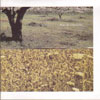 While looking at the instrumentation one would expect a jazz album (saxophones, guitar, percussion, electronics), the result is more of a jazz damaged electro-acoustic improvisations that manages to be both extremely minimal, yet surprisingly complex.
While looking at the instrumentation one would expect a jazz album (saxophones, guitar, percussion, electronics), the result is more of a jazz damaged electro-acoustic improvisations that manages to be both extremely minimal, yet surprisingly complex.
I must give Michel Doneda credit: he has managed to get achieve of the most unnatural and painful sounds out of a saxophone that I have heard in my life. Along with the normal jazzy rapid-fire bursts, he manages to get chokes and wheezes out of his poor reeded instrument. The opening track "Floating on the Mass of Blossoms" is based on a bed of minimal rumbling percussion and muted guitar work from Ielasi, overlayed with Doneda's abused saxophone, sounding like the last gasps of someone dying in the desert. The arrangements become increasingly lush towards the end, augmenting the previously mentioned textures with crystalline electronics.
"One Wing of Matter" is more focused on improvised percussion, found objects being used to create the rhythmic elements as a more conventional rapid fire sax blasts out over top. The ending portion of the track has a feeling of massive openness, augmented with metallic percussion sounds and the distinct rattle of an old time 8mm film projector. The closer, "Run Fingers Over Turquoise," is closer in feel to the opening of the disc, the clicks and clangs of minimal improvised percussion and wheezing saxophone over a quiet line of electronic tones and guitar chords. The electronics build to be the focal point at the end of the disc.
As sparse as the instrumentation is, the whole work is extremely complex and subtle. It has a very natural feeling to it. Listening is like being there in the studio with the musicians as they are playing the music, yet each listen reveals a different facet to the sound that was seemingly not there before. It's not the kind of work to put on in the background while doing something else as it commands full attention like it or not. I can't help but focus on the music if only to determine exactly what is going on. It does require a focused and critical ear, so non-adventurous types need not bother.
samples:
Read More
- Administrator
- Albums and Singles
 The electronic improviser's first solo release (after collaborations with the likes of Kevin Drumm and Zbigniew Karkowski) is a succinct yet powerful burst of harsh analog noise that is reminiscent of the old titans of Japanese noise, yet still allows for some rhythmic elements that are consistent with the current scene.
The electronic improviser's first solo release (after collaborations with the likes of Kevin Drumm and Zbigniew Karkowski) is a succinct yet powerful burst of harsh analog noise that is reminiscent of the old titans of Japanese noise, yet still allows for some rhythmic elements that are consistent with the current scene.
The dividing line between "noise" and "power electronics" was always questionable back when I was balls deep in the scenes in the late 1990s. Usually the latter had vocals and some semblance of rhythm, while the former was even more dissonant. More recently the barrier seems to have been broken down even more, and this disc, from a Polish artist I had never initially heard of, clearly falls into both camps. Consisting of four tracks, we get both the pounding rhythms and tortured analog synths of the power electronics kids, while the noise crowd is represented in sheer volume and brutality.
Leading off with "The Initial Speech," there's more of a modern day noise mixed with power electronics vibe. A pounding monotone rhythm gets progressively more and more distorted as time wears on until it is eventually a massive wall of noise with a barely audible thump buried in the mix before it slowly disintegrates. "4th Floor Meeting with Detailed Instructions" drops the overt rhythm but makes do with some notable loops amongst the noise. To use the crutch of artist comparisons, it doesn't quite meet Pain Jerk style spastic rhythm loops that dorky indie kids could find a way to dance to, it's more akin to the cut and paste brutality of Government Alpha.
Extending the use of comparisons, "Last Broadcast of Public Speakers" is based on prominent mid to high range tones sustained throughout the mix of noise and distortion, so not far removed from some of the earlier Incapacitants works. The final 11 minute track encompasses the album as a whole: more of a compositional feeling building from a slow beginning to bassy loops and fragments of distortion. As a whole it’s more drone oriented, with what may be processed vocals sounding like the screams of demons.
As a whole, it's not an easy listen: it is violent, dissonant, and brutal. Unlike folks like Wolf Eyes, there aren't any concessions to conventional rhythm or song structure. But that's what most good noise is like so people who can easily discern Merzbow from Masonna will most likely enjoy the hell out of this.
Finally, the packaging is amazing The CD is in a pop up folder (which seems to be the standard packaging for the emd.pl label), but in this case it’s a pliable soft plastic, red and clear, and resembling the CD poking out of an open wound once opened. It's both subtle and very cool.
samples:
Read More
- Administrator
- Albums and Singles
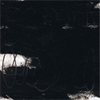 It's an odd proposition for a compilation: have the participants, most who are well known luminaries in the modern electronic avant garde world, submit tracks for a compilation that are idiosyncratic by nature, or essentially a very specific piece unlike their 'normal' work. The product of which is a surprisingly diverse mix with little in the way of 'low' spots, and also makes for a great genre introduction.
It's an odd proposition for a compilation: have the participants, most who are well known luminaries in the modern electronic avant garde world, submit tracks for a compilation that are idiosyncratic by nature, or essentially a very specific piece unlike their 'normal' work. The product of which is a surprisingly diverse mix with little in the way of 'low' spots, and also makes for a great genre introduction.
Although idiosyncratic by definition, some of these tracks are not completely out of left field for the genre, such as opener Janek Schaefer's "Scarlet Arrives," constructed from deep synthetic rumbles, organic tones, and some vinyl surface noises. Others do intentionally break from their expected styles, such as noise legend KK Null opting to work with digital percussion sounds instead of his trademark guitar destruction on "Idioscape/Decomposition." Northwestern US maniac Daniel Menche also contributes "Cadence," which, instead of going for full on textural noise destruction instead opts to gentily utilize percussion and focus on calm tones in order to construct a filmic, soundtrack type piece.
Others take the concept to far left field even more so. Modern minimalist clown prince Charlemagne Palestine's "La Beaute et la Bete" uses the title to a literal level, mixing his extended organ drones with a field recording of a farm or a petting zoo, and, well, a nice helping of porno samples. It's a do-it-yourself bestiality soundtrack guaranteed to induce laughter. Norwegian miscreants Jazkamer submit "Ruido Rosa 5 Minutos," which makes for a lo-fi crunchy burst of noise that isn't too different from Lasse Marhaug's harsher noise solo work, however a little softer and mellower. The most out of place track on here is Steffen Basho-Junghans' simple track of acoustic guitar that is of a simple motif that gradually layers itself thicker and thicker throughout, probably only due to instrumentation.
While they're not necessarily out of place, a few contributions don't stand out as being unique or fascinating, such as those by Troum and Eve and the Sickness. They're not really "stinkers" by any means, just ones that are overshadowed by the more unique works here. The nice thing is what makes this beginner-friendly is that the tracks are nice and bite sized (unlike the sprawling epics indicative of this genre) and the artists' contributions are different enough that established fans will be eager to hear what's here, but consistent enough with prior work that it will draw in newcomers without disappointing them.
samples:
- KK Null - Idioscape/Decomposition
- Charlemagne Palestine - La Beaute et la Bete
- Daniel Menche - Cadence
Read More
- Administrator
- Albums and Singles
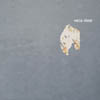 On this sprawling double disc compilation (one all new material, the other reworkings of the aforementioned material), there is a combination of an artist trying out new things, but presenting them in the framework of a DJ mix album. It's a difficult proposition, but one that works.
On this sprawling double disc compilation (one all new material, the other reworkings of the aforementioned material), there is a combination of an artist trying out new things, but presenting them in the framework of a DJ mix album. It's a difficult proposition, but one that works.
Hecq trounces across electronic music's genre boundaries on the 17 numbered tracks that make up this album, fusing elements of ambient, industrial, hip-hop, and the unfortunately named IDM, into what feels like a mix compiled for the club, but one done by an expert DJ who can take the somewhat disparate styles and coalesce them into a consistent, flowing album.
The more "out there" tracks, such as the alien voices and choral samples present in "0008" and the dying throes of an old sampler that make up "0009" manage to hang nicely with the soft, gentle synth organ of "0011" and "0016." Putting these next to the breakdance-friendly classic hip-hop beats of "0003" and the Autechre-esque sputtering loops and crunches of "0014" seems like a dangerous proposition, but Hecq pulls it off, meshing just the right amount of commonality between the very different styles. There are some other moments that are oddly bizarre as well, like the random sampler bursts and field recordings on "0004" and the softcore power electronics of "0015."
The second disc doesn't quite meet the high bar set by the first one, which isn't a surprise given the nature of outsourced remixes. The two remixes of "0001" submitted by Rekt put the stress on the beats (which were essentially absent in the original version). The first sticking closer to the dance floor with thumping beats, however the second is techno for automobile construction robots: all distorted fuzzy thumps and factory noise rhythms. With one exception the remixes (by the likes of Mad EP, Snog, Newt, and other, lesser known artists) keep the tracks more on the dance floor instead of the chill-out zone and put more focus on the beats and rhythms. The exception is Sknss [vs. Snog] which abandons the beats in lieu of digital ambience, which is all well and good, but for some reason Snog saw fit to add in some stereotypical goth/industrial vocals, which really detract from the track and causes it to stick out of place amongst the other tracks included, in a bad way.
Single misstep aside, Hecq has assembled a wide-reaching compilation of different electronic styles within his own work. Additionally, it contains a variety of remixes that may not really break any new ground or do anything exceptionally unique but still make for an entertaining listen.
samples:
Read More
- Administrator
- Albums and Singles
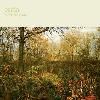 Earth might well be pioneers, but Hibernaculam feels like its treading water and diluting what made Dylan Carlson's project so great. Cleaned up and thinned out, these three re-versions of Earth tracks and a b-side feel like empty filler. Celebrating repetition over creating atmospheres, this is Earth hollowed from the inside out, the shell of the tracks brittle and insubstantial. By attempting to recontextualize Earth's music within classic American music forms means that it has lost what made it great; the fact they didn't fit in.
Earth might well be pioneers, but Hibernaculam feels like its treading water and diluting what made Dylan Carlson's project so great. Cleaned up and thinned out, these three re-versions of Earth tracks and a b-side feel like empty filler. Celebrating repetition over creating atmospheres, this is Earth hollowed from the inside out, the shell of the tracks brittle and insubstantial. By attempting to recontextualize Earth's music within classic American music forms means that it has lost what made it great; the fact they didn't fit in.
The drone is gone, and the riffs, like well kept graves, are stiffly arranged in recurring blocks, even becoming a little comedic in their moodiness. Redoing this material in a style similar to Hex, just doesn't work. Cutting "Ouroboros is Broken" right back means that the very moment when it breaks free of the AOR trudge is the point where the song ends. The expanse of desert horizon is only just visible after the meandering plod, the 1991 version leaves the listener stranded there. The reiteration of the riff in "A Plague of Angels" creates boredom, not trance. Its predictable chord changes following the dramatic style of copyists Sunn 0))); where once Earth led, now they follow. Carlson's loss of plot and attempts to move Earth from their epic drone/doom rock place the band in the dire overpopulated swamp of instrumental rock.
The documentary disc "Within the Drone" is a poor companion piece, and while it might help to put cracks in their myth which can only ever be a good thing, it doesn't exactly hold the attention. The long shots out the front of the tour bus might manage to fully express the boredom of that 2006 European tour, but the live clips of Earth on stage shouldn't be doing the same thing. The performance footage is laborious, sounding thin, stretched and dull rather than the elephantine widescreen of their early records. The interview footage of Carlson and his tales of what he nearly managed to do between being fucked up or being in rehab are average but tantalizing. They only serve to show what might have been had he made Earth the focus of his time, instead of skag. Laying off the cigarettes wouldn't kill him either, sounding he's permanently just in the process of waking up after a night on the tiles. He does get into an interesting area when he gets into his interest in drone, but the majority of his conversation lacks anything of any real substance.
samples:
Read More
- Administrator
- Albums and Singles
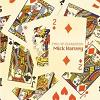 Mick Harvey's third release in less than two years is one of the finest albums he has ever put his name to. Like his previous solo output, this album is largely composed of pristine covers with a couple of songs written by Harvey thrown in for good measure. Covering artists closer to his heart has resulted in a far stronger album than 2005's One Man's Treasure. As a Bad Seed too often overlooked, it is great to hear him produce such a gem.
Mick Harvey's third release in less than two years is one of the finest albums he has ever put his name to. Like his previous solo output, this album is largely composed of pristine covers with a couple of songs written by Harvey thrown in for good measure. Covering artists closer to his heart has resulted in a far stronger album than 2005's One Man's Treasure. As a Bad Seed too often overlooked, it is great to hear him produce such a gem.
Mute
Harvey spends a sizeable chunk of the album paying tribute to Australian artists that have heavily influenced his own music from The Boys Next Door all the way up to his current work. Songs by The Saints, The Triffids and The Loved Ones are performed with great respect; The Saints' "Photograph" is a fantastic opener to Two of Diamonds. Harvey sounds completely at home here; the same loving treatment of these songs is present on this album like it was on his two Gainsbourg tribute albums. Another strong Aussie influence comes in the form of Simon Bonney, whose Crime and the City Solution featured Harvey heavily. The Crime song "Home is Far from Here" closes the album, Harvey's voice may not be as strong as Bonney's but he still infuses the song with the same power as the original.
His own songs stand proud amid all the other fine examples of songwriting on Two of Diamonds. It is always hard not to compare what Harvey does in his own time with his role in the Bad Seeds. While the two songs included here are unmistakably Harvey's work, he steps out further from Nick Cave's shadow here than he has before. "Blue Arrows" sounds very different from anything the Bad Seeds have done, the sentiment is the same but Harvey's arrangement is quite unlike anything from the eclectic repertoire of the Bad Seeds.
Overall, Two of Diamonds is a cracking album. Harvey sounds completely comfortable with all the songs, which all suit his voice perfectly. The self-penned songs in particular are very good; hopefully it will not be long before he puts together a complete album of original songs. Considering his role in the Bad Seeds does not seem to be as strong as it once was, it would not surprise me in the least if he concentrated on his solo work even more. If it results in more albums like this, I would be delighted if he took time out from the Bad Seeds to write and record more of his own material.
samples:
Read More
- John Kealy
- Albums and Singles
Given the song titles, both are unsurprisingly reminiscent of "Sun Day" from the debut album. However, the more melodic elements that crept in with the following releases is also present. "Sun Down" shifts between the patented Broadrick heaviness and the dreamy shoegaze textures that he has embraced in these last few years. About halfway through the sound drops dramatically before a gorgeous melody takes over with Diarmuid Dalton's bass providing a warm environment for Broadrick to work in. The heavily processed guitar sound of Fennesz comes to mind, the end result is stunning.
The flipside's "Sun Rise" maintains ideas explored on "Sun Down"—a brooding rumbling sound gives way to several layers of guitar, heavily distorted chords pushed far into the mix with a number of clean guitar tracks creating a shimmering refrain. With each bar, it gets a little more lush as Broadrick adds another element to the sound or just changes the levels between the different components. When Broadrick's lyrics finally come in, they are completely obscured by the music but become clearer and clearer with each repetition. This effect of building the piece up and up works well, Broadrick's treatment of the sound is subtle that it is only after about five minutes it becomes clear that so much has been slowly added to the song.
Sun Down/Sun Rise is further proof that Jesu is some of Broadrick's best work. I have always had a lot of time for all his projects but I feel with Jesu that he has found his voice. Granted that much of his work with Jesu is based within clear limits but considering the vastly different bands and solo projects that he has done in the past, it is silly to think that his work is just more of the same. All of his work is an exploration in sound and the name on the spine is only an indication of what frame of mind he was in at the time of recording this particular release. This EP is sterling work and is definitely up there with the best of Broadrick's output.
Read More


